The need for secure crypto storage is growing as global adoption increases and high-profile hacks become more frequent.
Many Bitcoin investors are looking toward the best offline crypto wallets to keep assets safe, but knowing which one is best for you can get tricky.
If you’re searching for the best crypto offline wallet, you’re not alone.
With so many options on the market, picking the right one for you depends on your priorities and needs.
Many users on forums commonly ask “What is the best crypto offline wallet Reddit?” and the answers can vary widely!
In this guide, we have chosen only 3 distinct cold crypto wallets that we think offer the best offline security for different needs.
Each option offers something different: from hardware wallets like the Ledger Nano X to NFC-enabled cards like Tangem, and even non-electronic storage such as Material Bitcoin.
What is an Offline Crypto Wallet?
An offline crypto wallet, alternatively known as a cold wallet, is considered to be the safest way to store crypto.
This is because it is 100% disconnected from the internet, which makes it extremely difficult for cybercriminals to steal your private keys.
Online wallets, also called hot wallets, are always connected online.
Sure, they might be more accessible but for this same reason, are constant targets for hacking.
Bybit Hack: What Happened in 2025
In February 2025, the FBI reported a major phishing campaign targeting Bybit users, likely linked to North Korea’s Lazarus Group.
Attackers exploited third-party app connections to steal credentials and crypto assets.
This incident highlights the need for cold storage and minimizing exposure to centralized exchanges.
Types of Offline Wallets
There are several types of crypto offline wallets, each designed to balance security and ease of use in different ways.
The Difference Between Offline and Online Wallets
When it comes to storing cryptocurrency, offline versus online wallets all comes down to security versus convenience.
Each option has its advantages and disadvantages, depending on how you plan to use your crypto.
Offline Wallets
Are disconnected from the internet, making them significantly more secure, especially against hacking, and phishing attacks.
Offline wallets are the ideal choice for long-term HODL, as you don’t need daily access to your crypto but rather prefer peace of mind knowing that your assets are stored safely.
Especially true of hardware wallets that require a connection to a computer or mobile phone, transactions can take longer.
This is because they usually require you to connect the device to access your account and make a transaction.
Some might see this as a hassle and waste of time. On the other hand, some cold storage wallets, like Material Wallets, do not require any of those steps.
You simply scan the QR code on the metal plate to access your funds or add your wallet’s public address to receive crypto.

Online Wallets
Online wallets are crypto storage options that are always connected to the internet.
They’re known to be easy and convenient, allowing you to send and receive cryptocurrency quickly.
You can access them from a mobile phone, or web browser.
Popular hot wallets, include Coinbase Wallet, MetaMask and CashApp.
Although they are easy to use and give you quick accessibility, their constant internet connection also makes them more vulnerable to security breaches.
For users who need instant access to their crypto, online wallets may be appealing, but security should be considered before storing all of your digital assets online.
In the first few months of 2025, there have been a few significant hacks and breaches.
| Target | Date | Estimated Loss |
|---|---|---|
| ByBit | Feb. 21 | $1.46 Billion |
| AdsPower | Jan. 21–24 | $4.7 Million |
| Phemex | Jan. 23 | $85 Million |
| Moby | Jan. 10 | $2.5 Million ($1.5M recovered) |
Offline Vs. Online Wallets
| 🔐 Feature | 📦 Offline Wallets | 🌐 Online Wallets |
|---|---|---|
| 🔒 Security | Highly secure due to no internet connection; immune to hacking and malware. | More vulnerable to hacks, phishing attacks, and malware due to constant internet connection. |
| ⚙️ Convenience | Can be less convenient for frequent transactions; and requires extra steps to transfer funds. | Highly convenient for daily use and trading; instant access to crypto. |
| ⚠️ Risk of Loss | Physical loss of the wallet or forgetting the recovery phrase can lead to permanent loss of funds. | Easier to access, but account breaches can lead to loss of funds. |
| 🎯 Best For | Long-term storage or users holding large amounts of crypto. | Day-to-day transactions, trading, or users who need quick access to their cryptocurrency. |
New Types of Hacks and Scams to Watch Out For
Cybercriminals are using advanced tools and getting good at exploiting crypto investors.
AI-generated phishing scams can now create hyper-personalized emails or messages that appear to come from trusted wallets, exchanges, or even friends.
Meanwhile, deepfake technology is being used to create realistic voice or video impersonations of support agents, tricking many investors into revealing their seed phrases or private keys.
Another growing threat is “prompt injection” targeting AI chatbots integrated into wallets or exchanges, where criminals manipulate AI responses to mislead users.
These sophisticated tactics only make it more clear why using an offline crypto wallet is crucial.
@runthechain As a crypto investor we need to beware of crypto scam, now scammer will use AI to do their scam. How to find out? #crypto #cryptoscam #eth #AI #coinmarketcap ♬ original sound – RunTheChain
Top 3 Best Crypto Offline Wallets
Choosing the right offline crypto wallet for your digital assets is crucial for its security and safety.
Here are the top 3 best offline crypto wallets, each with its features for different types of investors.
Material Bitcoin
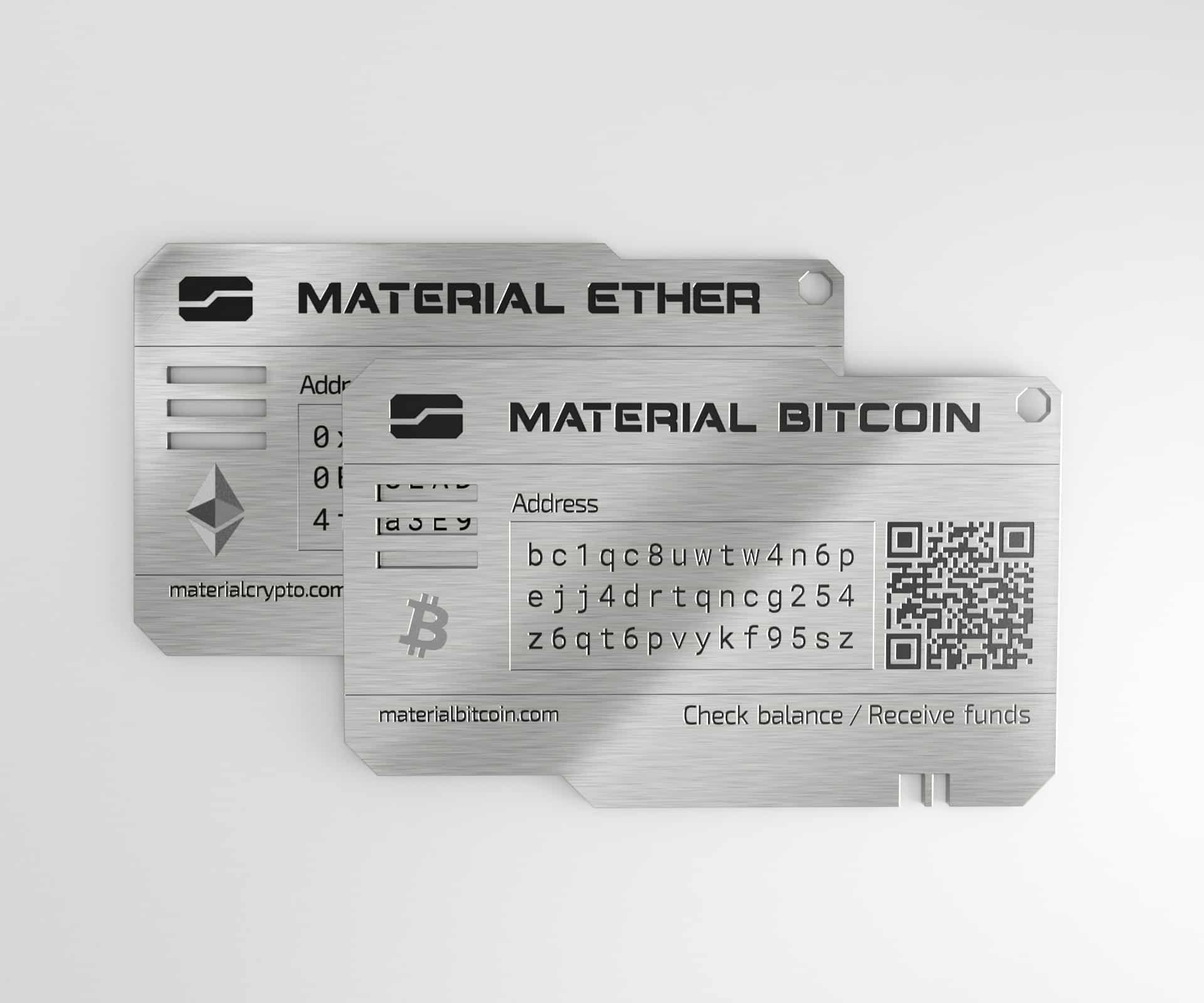
| Feature | Description |
|---|---|
| Security Features | Material Bitcoin is a true cold wallet that is completely offline and built for maximum security. Unlike electronic wallets that connect to the internet, Material Wallets store your private key in a physical format. Made from laser-engraved stainless steel, it’s resistant to water, fire, corrosion, and physical damage. |
| Cryptos Supported | Separate wallets are available for Bitcoin (BTC), Ethereum (ETH), and Tether (USDT). Each version is dedicated to a single asset for simplicity. These are the ideal crypto wallets for beginners or holders of specific coins. |
| Price | Starting at just $89, Material Bitcoin is an affordable, ultra-secure alternative to hardware wallets. No screens, no batteries, no updates needed. |
| Best For | Perfect for long-term crypto holders seeking a high-security, low-tech solution. Great for those focused on single-asset storage who want full control without digital dependencies. |
Ledger Nano X
| Feature | Description |
|---|---|
| Security Features | The Ledger Nano X has a secure element chip (CC EAL5+ certified) that keeps private keys isolated from internet access. It also includes PIN protection and an optional 2-factor authentication (2FA). With Bluetooth functionality, it’s secured with encrypted communication and supports a custom passphrase for extra protection. |
| Cryptos Supported | Supports over 1,800 cryptocurrencies, including Bitcoin (BTC), Ethereum (ETH), Solana (SOL), Ripple (XRP), Litecoin (LTC), NFTs, and nearly all ERC-20 tokens. It also connects with DeFi apps via the Ledger Live app. |
| Price | Retailing at $149, it’s more expensive than non-electronic options like Material Bitcoin. However, it does provide multi-crypto support, Bluetooth capability, and a large selection of app integrations. |
| Best For | Ideal for investors with diverse crypto portfolios who need secure, mobile-friendly access. Best for those who use DeFi, staking, NFTs, and multiple wallets across chains that also want cold storage security. |
Tangem Wallet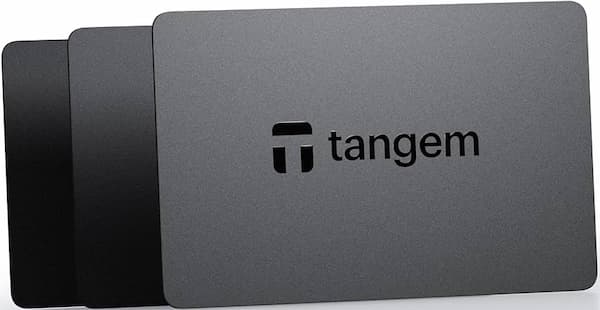
| Feature | Description |
|---|---|
| Security Features | Tangem uses a built-in NFC chip and military-grade encryption to keep your private keys secure. The wallet never connects to the internet and doesn’t require batteries, cables, or software updates. Keys are generated and stored securely inside the card, with 2 cards included as a backup solution. |
| Cryptos Supported | Supports over 6,000 coins and tokens across more than 70 blockchains, including Bitcoin, Ethereum, Solana, BNB Chain, XRP, and stablecoins. Also supports NFTs and staking on select networks via the Tangem app. |
| Price | Starting at $54.90 for a 2-card set, Tangem is an affordable cold storage option. |
| Best For | Great for tech-savvy users and mobile-first investors who want a portable cold wallet for on-the-go management. |
Why Use a Cold Crypto Wallet?
➡️Security: Cold wallets are offline, making them far less vulnerable to hacks.
➡️Long-Term Storage: Ideal for HODLers, since cold wallets offer high security, you can “set it and forget it“.
➡️Self-Custody: With cold wallets, you’re in full control of your private keys, eliminating the risk of third-party platforms being hacked or compromised.
How to Choose the Best Offline Crypto Wallet for Me
Once you’ve decided to store your crypto in a cold crypto wallet, it can be overwhelming to decide which one is best for you.
Take our useful survey to guide you in the right direction on how to choose the best secure offline crypto wallet for you.
Setting Up and Using Your Cold Wallet
Step-by-Step Setup: Material Bitcoin
Setting up your Material Bitcoin cold wallet is so simple!
1. Unbox Your Material Bitcoin Wallet. Make sure that it hasn’t been previously opened or tampered with.
2. Enter your public address into an exchange to send crypto to your wallet.
3. Scan the QR code on the metal plate to check your balance.
❗Don’t Forget to Back Up Your Wallet
Always create a secure recovery seed phrase when setting up your wallet. Without it, your funds could be lost forever if your wallet is damaged or misplaced.
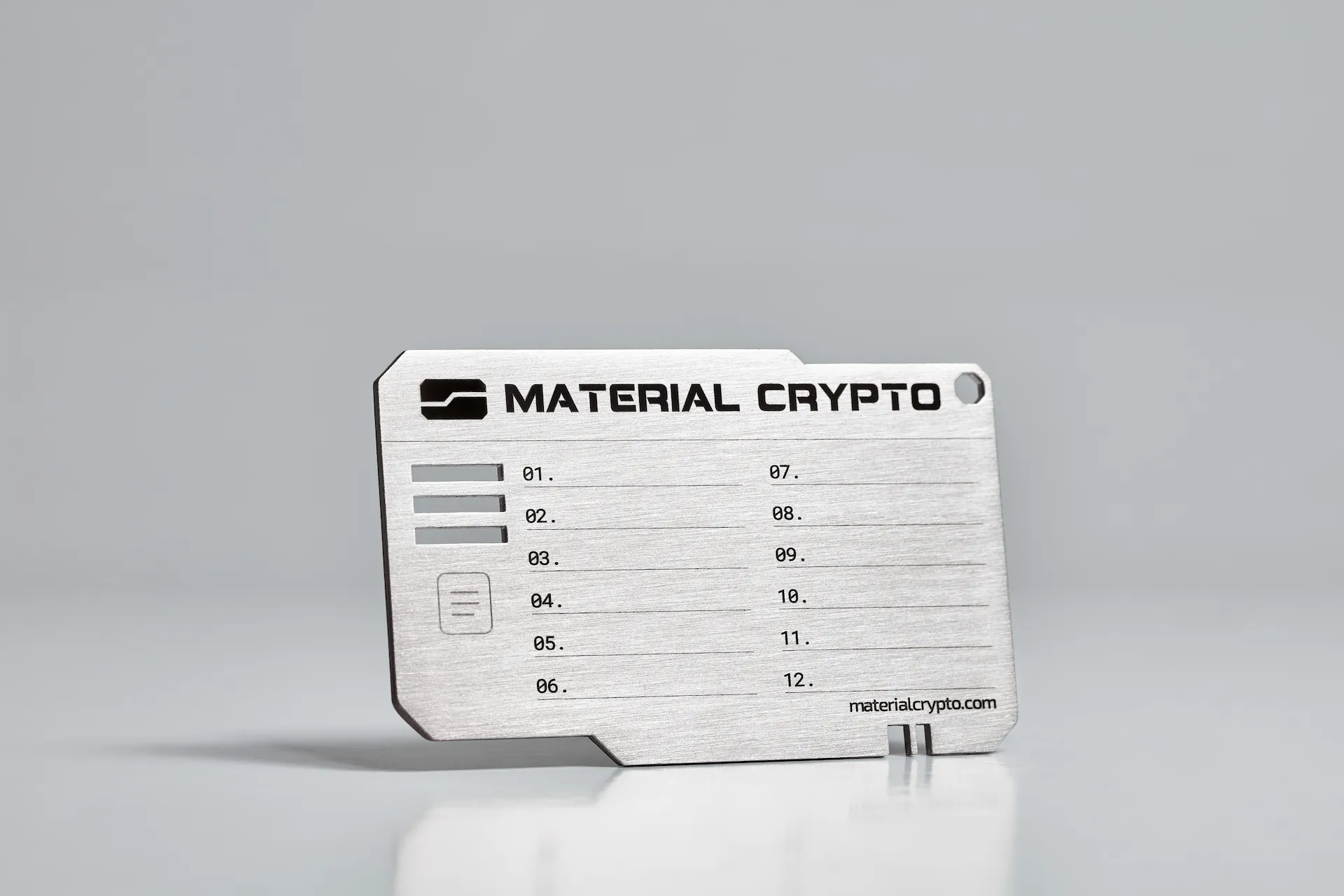
For maximum protection, store your seed phrase on a cold wallet backup like Material DIY, a durable, fireproof, waterproof steel plate built for long-term security.
Set-Up Guide For a Ledger Nano X
1. Unbox Your Ledger and connect the device to your computer or phone via USB or Bluetooth.
2. Download Ledger Live to your computer or mobile phone.
3. Initialize the device by setting up a new wallet and following on-screen instructions, choosing a PIN code, and writing down your 24-word recovery phrase.
4. Confirm backup.
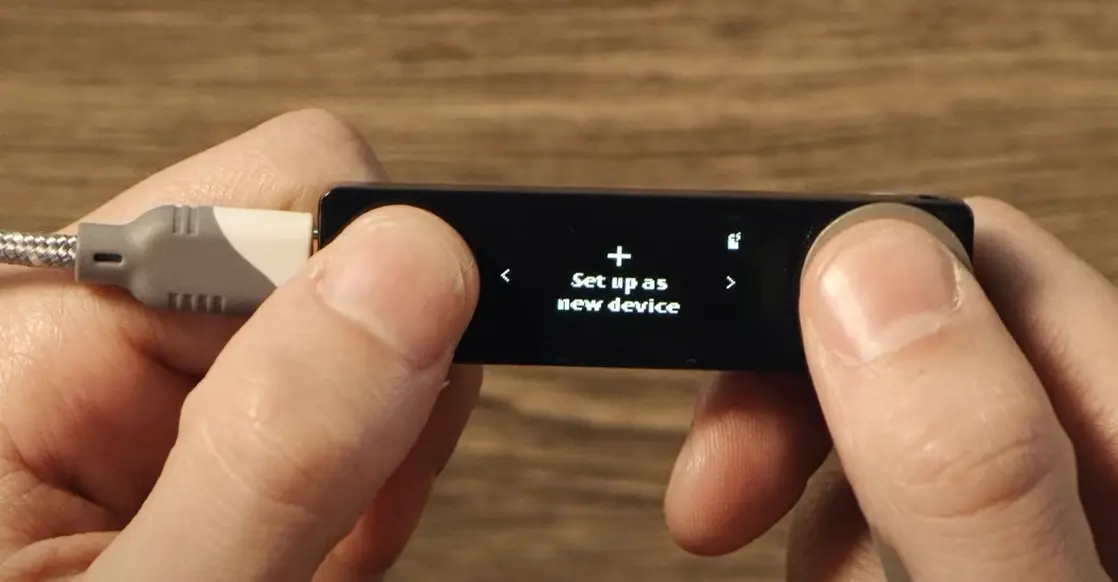
Setting Up Your Tangem Wallet
Setting up your Tangem Wallet is fairly simple, thanks to its innovative NFC technology. Here’s how to get started:
1. Unbox your Tangem card, which is the physical device that holds your crypto.
2. Download the Tangem Wallet App from the App Store or Google Play on your smartphone.
3. Activate your wallet by opening the app and tapping the card against your phone’s NFC reader to activate. Follow the in-app instructions to complete the setup.
4. Create a backup wallet. You can add up to 3 Tangem cards to secure your assets.

Final Thoughts on Choosing the Best Offline Crypto Wallet
Securing your crypto with an offline wallet remains one of the smartest moves you can make.
With rising threats like AI-driven scams and deepfake attacks, keeping your private keys completely offline is crucial for the safety of your crypto.
Whether you go with Material Bitcoin or another trusted solution, the best offline crypto wallet is the one that matches your security priorities, supported assets, and long-term strategy.
Just as important as the wallet itself is how you use it!
Always back up your keys securely, store them in separate locations, and stay updated on the latest threats to keep your assets safe for the future.
Discover The Material Bitcoin Blog
Your trusted source for crypto news, expert insights, and secure cold storage guidance.
Whether you’re just getting started or looking to level up your strategy, we’ve got you covered.
Recommended Reads for Smarter Investing:
FAQs
Can a Cold Wallet Be Hacked?
- Cold wallets are offline, which makes them highly secure against hacks. However, since they are physical objects, consequently, they can be lost or stolen. We suggest storing your offline crypto wallet in a home safe.
What Happens if You Lose Your Cold Wallet?
- If you lose your cold wallet, you can still recover your assets using your backup recovery phrase. Make sure to keep the phrase in a safe, secure spot, separate from the wallet.
Are Cold Wallets Compatible with DeFi?
- Yes, cold wallets can interact with DeFi platforms, but you’ll need to temporarily connect them online through apps like MetaMask to access decentralized finance services.
Do Cold Wallets Support Multiple Cryptocurrencies?
- Most electronic cold wallets support multiple cryptocurrencies.
Is it Hard to Set Up a Cold Wallet?
- Setting up a cold wallet is generally straightforward since each wallet comes with clear instructions, and it’s important to follow the steps and contact their customer service if you have any doubts.

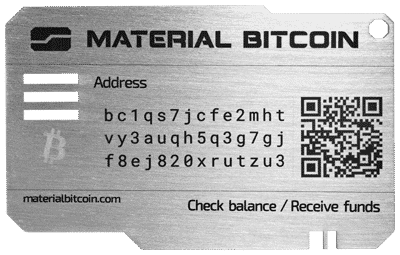

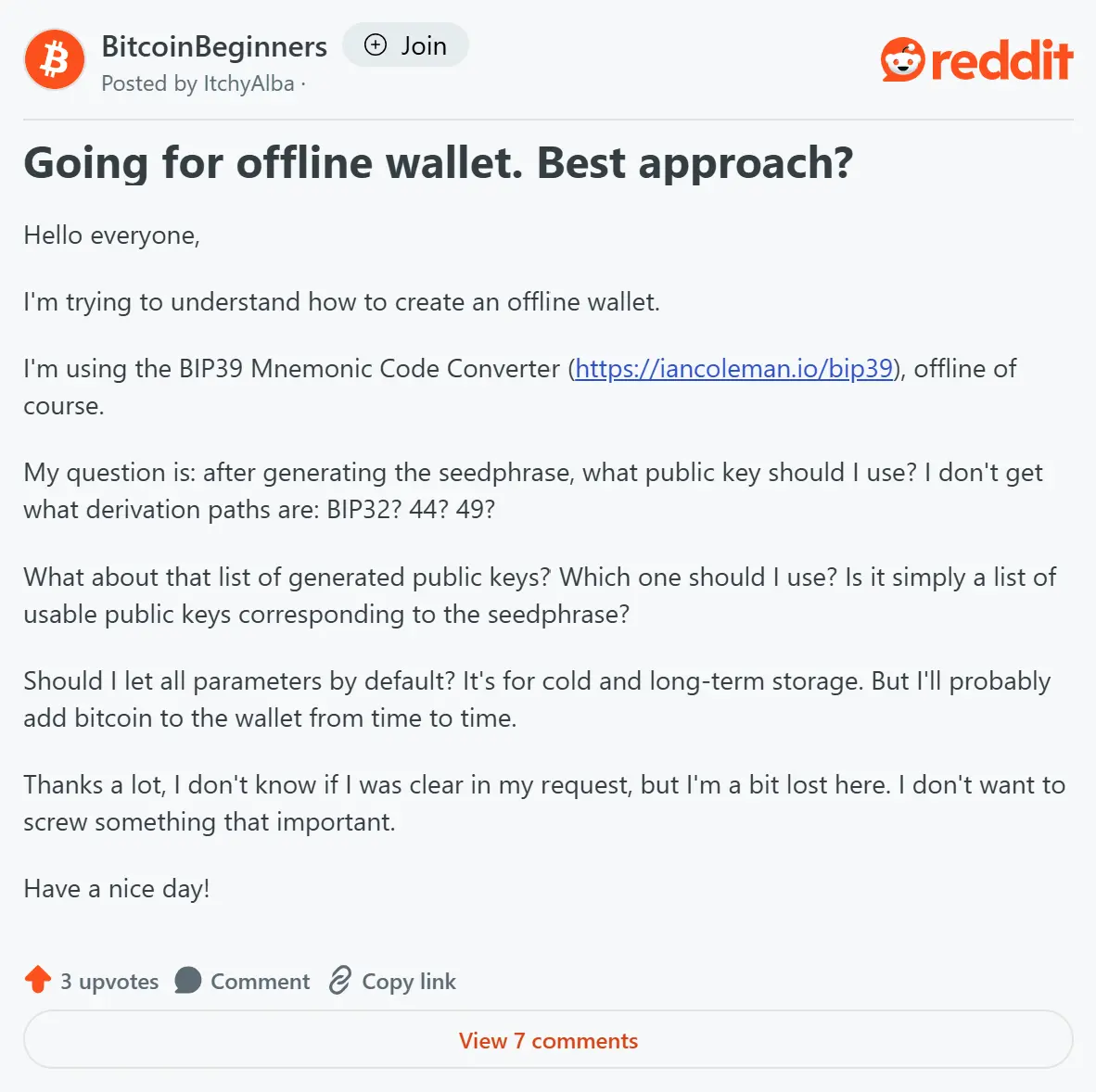




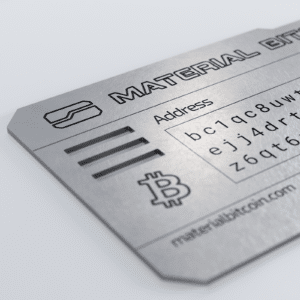


0 Comments